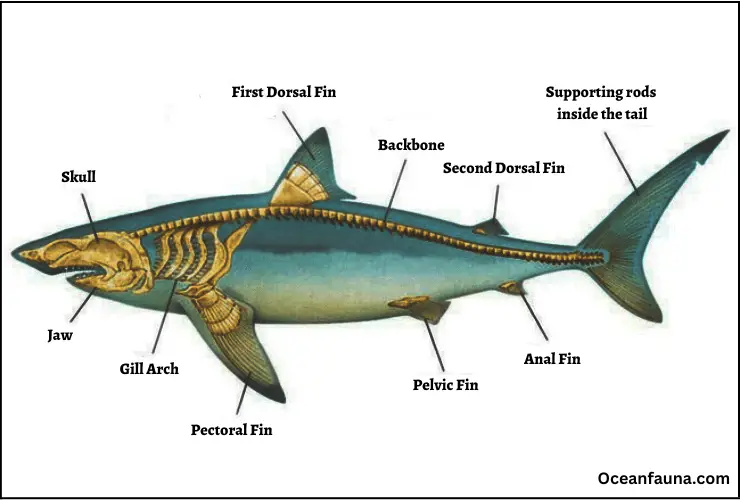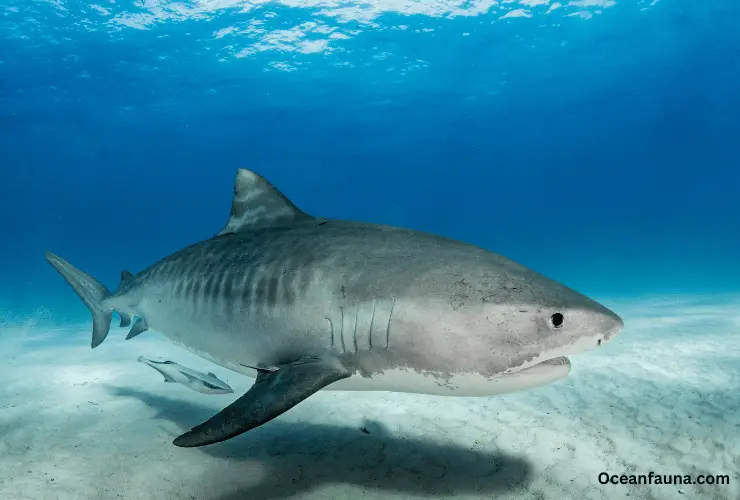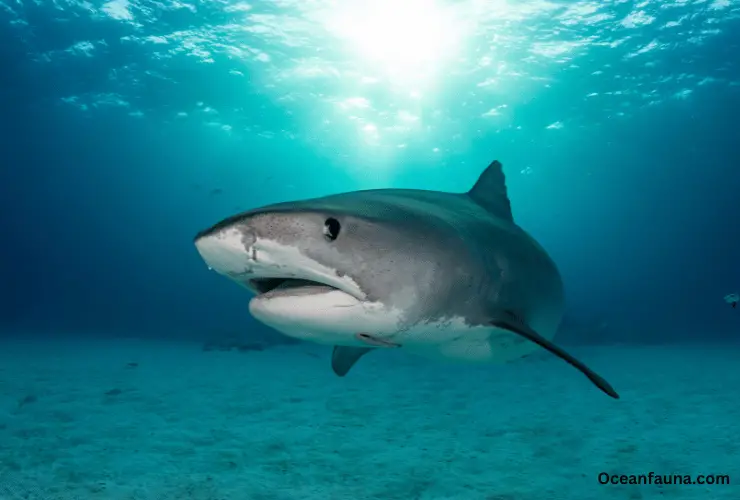Don’t you know the truth that sharks don’t have any bones? But what about the backbone? Prepare to be amazed! This blog is full of amazing facts and information you may never have heard before.
Sharks belong to the group of animals known as vertebrates because they possess spinal columns. So, yes, they have backbones. However, a shark’s “backbone” is not actually composed of bone. Because their skeletons lack true bones, sharks are classified as cartilaginous fish.
Read more to find out about the secret behind shark anatomy.
Do Sharks Have Backbones?
So, you already know that shark has backbones but not like other vertebrate animals. Instead, sharks are classified as cartilaginous fish because their backbones are made up of a different material – cartilage.
What Is Cartilage?
Cartilage is an extraordinary connective tissue that exists in humans and many other species. It’s much lighter than bone, lending creatures more flexibility while moving through water faster.
Additionally, cartilage makes up several parts of our skeleton, like the nose, ears, ribs, and larynx – all offering us tremendous strength without hardening over time as it does for non-cartilaginous animals.
What Are the Benefits of A Cartilaginous Backbone For Sharks?
Sharks have evolved this structure to allow them the freedom of movement when swimming as well as protection from potential predators. Also, cartilage is much lighter than bone, making it ideal for species that must stay buoyant in order for them to survive in the open ocean.

Despite having cartilage instead of true bone, sharks’ ‘backbones’ still serve many of the same functions as those of other vertebrates. Their spines support their internal organs and also provide an attachment point for muscles used in swimming and breathing.
Additionally, the cartilages in the shark’s skull and snout are thicker and firmer, coated with additional calcium salts to provide added protection.
Further along these lines, shark spines are also responsible for transmitting sensory information, such as vibrations or pressure changes in the surrounding environment, to the brain, which allows sharks to better navigate their aquatic homes.
What Role Does Shark Vertebrae Play in Their Anatomy?
Shark vertebrae play a key role in the anatomy of these predatory fish, providing them with a good amount of protection from potential predators. Vertebrae serve to support the body’s weight and shield and protect the spinal cord. The vertebrae serve this purpose primarily.
Sharks and other cartilaginous fish possess vertebrae designed with two distinct tubes of cartilage, allowing for enhanced strength and flexibility.
Related: Do Sharks Eat Bones? [Yes, Here’s How]
The top tube is formed from the neural arches, with cartilage filling between each vertebra to provide a continuous protective covering for the spinal cord. Further layers within the bottom tube solidify into calcification that serves as an effective shield encasing its notochord.
Additionally, shark vertebrae allow for easier movement and improved posture when swimming in open waters. Lastly, shark vertebrae are also responsible for transmitting sensory information to the brain, which helps sharks navigate their environment and easily locate prey.
What Are the Rings of a Shark’s Backbone?
Sharks have a spine made of several concentric circles of cartilage, similar to the vertebrae found in other animals that are constructed from bone — yet with an interesting twist. Shark’s vertebrae feature alternating transparent and opaque rings along their length; scientists can estimate a shark’s age by counting the number of bands or rings on its backbone.
For example, if a shark has 10 bands, we can assume that it is 10 years old, though this does vary by species. Some species, of course, may only leave a single band every two years.

Moreover, these rings provide flexibility and elasticity and additional protection when the shark moves through its environment. The rings also help to distribute the force of the shark’s powerful muscles as it moves through the water.
Do Sharks Possess a Rib Cage?
As a component of human rib cages, the flat bones that make up the ribs serve to shield vital organs from injury. Bones are the primary component of a rib cage. And since sharks don’t have bones, they also don’t possess a rib cage.
Yet, in place of ribs, sharks possess a remarkable arrangement of cartilages that both offer to back and safeguard their inner organs. This intricate system makes it so that when they run out of water, these creatures can still avoid collapsing under the burden of their own weight.
Therefore, don’t think that sharks have ribs made out of cartilage; instead, they are equipped with an efficient support system like no other!
Why Are Sharks Boneless?
Astonishingly, one of the world’s top predators – sharks – lack bones! But why they don’t have any bones? If you look into it, you’ll find that the ancestors of sharks had a bone structure for their skeletons.
But today’s sharks have no bones in their bodies, and scientists have revealed that the ancestors that did have bones developed them when cartilage ossified. Similar to how more cartilage develops in a new-born human body before they are transformed into bones.
Yet other studies have shown that the evolution of sharks to have only cartilage has contributed to their success in the aquatic environment.
I’m sure these sharks would be relieved to have lost their bones and replaced them with cartilage if that’s how evolution worked out for them. Think about how fast they are underwater and how that helps them catch prey with ease.
Conclusion
So, Is a shark a vertebrate, yes or no? Yes, sharks are vertebrates. They have evolved incredible backbones made of cartilage instead of bone.
This unique change enables them to swim swiftly, track down their prey quickly and accurately, safeguard internal organs from damage, and even determine age through the analysis of bands on their backbone.
Sharks’ boneless bodies also provide improved flexibility and elasticity for better posture when swimming in open waters and transmitting sensory information to the brain. All these features make sharks one of the most successful predators in the ocean!


1 thought on “Do Sharks Have a Backbone?”